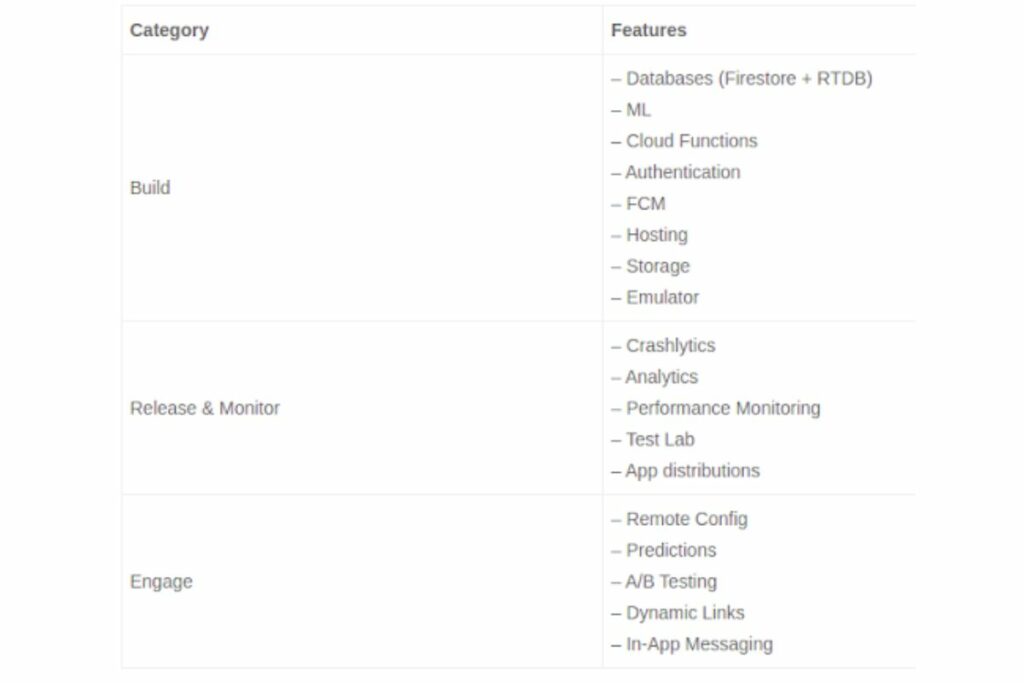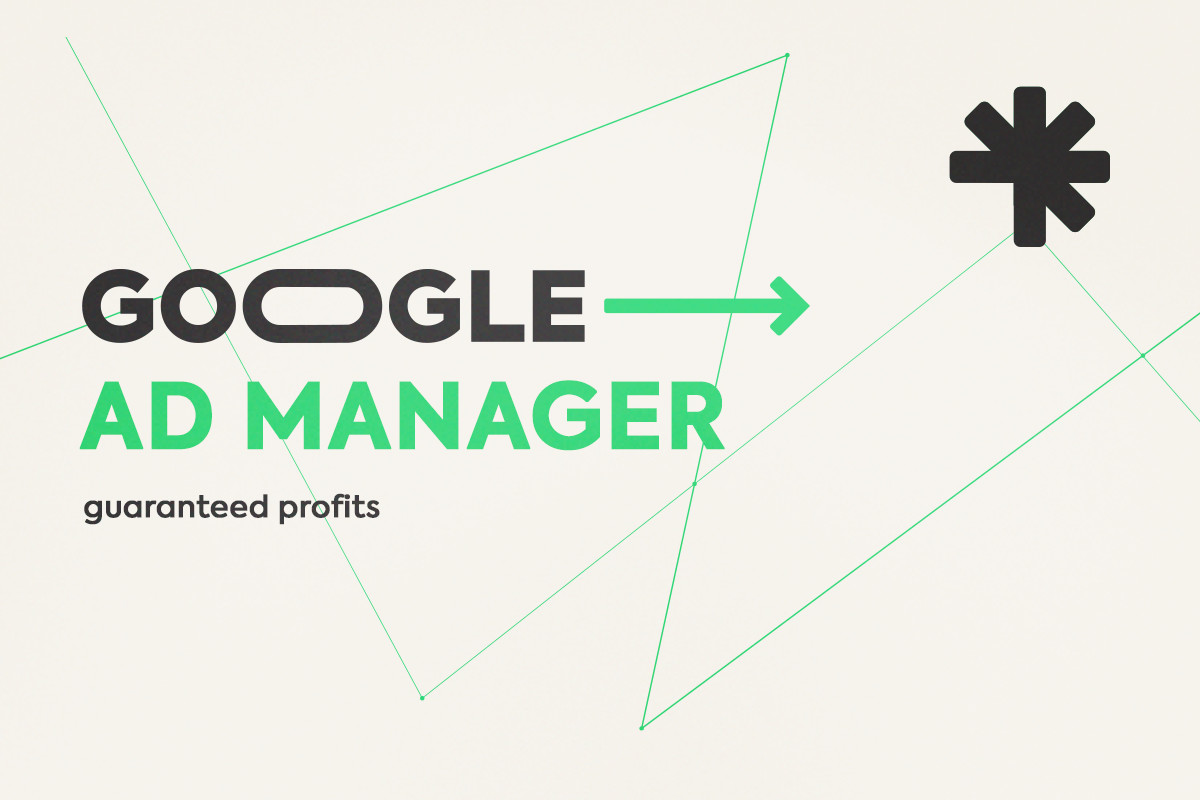Developing robust and high-quality mobile applications is a challenge. It requires a powerful and feature-rich development platform, and Google Firebase is one of those platforms.
If you are a Grumft ad partner, welcome to our blog! If you’re not yet, we hope this content motivates you to explore our exclusive programmatic solutions for publishers, app developers, and advertisers.
In this article, you’ll find detailed information about Firebase and its features, so you can discover how it works and if it’s the best platform for your app development needs.
Index
What is Google Firebase and how does it work?
Google Firebase is a mobile app development platform that offers powerful resources to create, manage, and enhance applications. It’s a backend platform that helps developers create web and mobile apps quickly and efficiently.
Firebase aims to solve three main developer challenges:
- Rapid app creation
- Reliable deployment and monitoring
- User engagement
With features like databases, authentication, push messaging, analytics, and file storage, developers can focus on providing robust app experiences while Firebase takes care of the rest.
Being hosted in the cloud, developers can easily scale their apps. Firebase is currently one of the top app development platforms used by developers worldwide.
Who uses Google Firebase?
Firebase is a popular and reliable app development platform used by various prominent clients. Some examples include Alibaba, The New York Times, Todoist, Le Figaro, and eBay Motors.
Categories of Apps that can be developed with Google Firebase
Firebase is a flexible and comprehensive platform that allows the development of a variety of app categories. Users can develop apps for the following categories:
- Android
- iOS
- Web
Google Firebase Use Cases
Firebase is a powerful platform that offers a wide range of use cases for developers. Some of the most popular use cases include:
- Minimum Viable Products (MVPs): ideal for creating prototypes and MVPs due to its ease of use and seamless integration.
- Real-time Apps: allows developers to create real-time apps that automatically update when there are changes in the database.
- Chat and Messaging Apps: provides real-time messaging features to develop chat and messaging apps.
- User Behavior-based Ad Optimization: features robust analytics that can be used to optimize ad display based on user behavior.
- Photo Sharing: offers file storage capabilities that can be used to create photo-sharing apps.
- User Retention Optimization through Machine Learning: Firebase offers machine learning features that can be used to optimize user retention in apps.
- Business Apps: can be used to create business apps, such as project management and accounting apps.
Advantages and Disadvantages of Google Firebase
Like any other tool, Firebase has advantages and disadvantages that should be considered. In this article, we will explore in detail the advantages and disadvantages of Google Firebase and how they can influence your decision to use it in your projects.
Advantages of Google Firebase
- Free to Start: Firebase is a platform that allows login with Google account and offers the Spark plan free of charge, packed with features to help developers get started. As your needs grow, you can opt for the paid plan, which takes into account the limits of the free plan.
- Development Speed: Firebase dramatically reduces time-to-market. It allows managing all the work, saving time and reducing complexity. With ready-to-use services like data storage, authentication, notifications, and analytics, there’s no need to create boilerplate code or start from scratch with the backend as it offers high-quality SDKs, detailed documentation, and a vibrant community to easily integrate Firebase into your codebase.
- Wide Range of Services: Firebase also offers a comprehensive list of products that aid in the development process.
- It offers two database options: Firestore and Firebase Realtime Database. Similarly, Firebase allows effortless cloud media storage and enables serverless app development through integrated Cloud Functions. It covers the entire app development lifecycle, and the platform contains resources to create, release, and monitor apps. Furthermore, as the final step of the app development cycle, it provides tools to engage and retain users in the app.
- Developed by Google: Google acquired Firebase in 2011 and has since undergone a series of changes, becoming the reliable platform it is today. It leverages the power of Google Cloud and many of Google’s services. Besides being part of the Google Cloud Platform, it works seamlessly with other Google Cloud services and integrates with various third-party services.
- Frontend Focus: Firebase allows you to focus on creating frontend code for mobile apps and reduces the need to develop standard backend code, delaying the app development completion date. It helps keep costs low and allows standardizing the backend environment into a single, easy-to-learn technology.
- Serverless: Scaling servers is not easy, especially a database cluster. Optimizing performance for large workloads is challenging and requires experienced engineers. However, Firebase addresses this problem and provides a fully serverless environment. It comes with a serverless architecture that requires users to pay based on requests, and there’s no need to manage or worry about server infrastructure. As a result, there are fewer scalability concerns due to improved efficiency. Developers are free to adopt a pragmatic approach to handle DevOps, configuration, infrastructure, and capacity planning.
- Machine Learning: Machine learning is on the verge of transforming the IT industry. In this regard, Firebase is also advantageous as it offers developers the option to leverage machine learning. ML can be used by iOS and Android developers, regardless of their expertise level. It comes with an ML Kit with ready-to-use APIs for various mobile platform resources, such as text recognition, face detection, image labeling, barcode scanning, and more. Developers can choose between cloud-based or on-device APIs based on their app development requirements.
- App Indexing: Firebase facilitates app indexing so that users can re-engage app users from Google Search by providing app links in search results. App ranking can also be improved in Search once an app is indexed, helping your app gain exposure to new potential users who might install it. Developers can rely on Android Instant App, which can be used to access app content.
- Error Monitoring: Firebase’s Crashlytics feature is a tool that finds and fixes issues quickly. Firebase can monitor both non-fatal and fatal errors, and reports are generated based on how the errors affect user experience.
- Backups: Firebase ensures optimal data security and availability through regular backups. Apps are protected against any possibility of data loss by having this platform’s automatic backup feature. Blaze plan users can easily set up Firebase Realtime Database for automatic backups. By clicking on the Firebase Database’s Backup tab, automatic backup settings can be accessed.
Disadvantages of Google Firebase
- Not Open Source: Firebase is not an open-source option, making it a less ideal choice for many developers as they cannot modify the source code. Many developers who appreciate Firebase’s features end up using other platforms due to this limitation. However, it’s worth noting that many libraries and SDKs are available on GitHub. This can be the biggest limitation of Firebase and prevents the community from improving the product, increasing flexibility levels, and self-sufficiency options for developers who can’t afford Firebase prices.
- Vendor Lock-in: Vendor lock-in is one of the major barriers to Firebase adoption. This substantial obstacle prevents many developers from choosing this platform. Lack of access to the source code can be particularly challenging for some professionals in the field. Especially in the case of complex applications, switching to other providers is not an easy task. This change would require a complete backend reconstruction from scratch.
- Not Available in Many Countries: Firebase, being a subdomain of Google, can be accessible through the official website https://firebase.google.com. However, it’s worth noting that Firebase is blocked in several countries. For instance, China blocked URIs with *.google.com and *.googleapis.com, resulting in the blocking of access to Google, including Firebase. Works with NoSQL
- Databases Only: Firebase is a platform that exclusively works with NoSQL databases. Both Firestore and Firebase Realtime Database are options that offer a NoSQL structure and do not support relational databases.
- Slow Queries: When choosing a database, it’s essential to recognize that not all options are ideal for all use cases, and Cloud Firestore is no exception. While Firestore is a fantastic solution for scaling apps, providing support for offline queries and delivering real-time updates, it also has its limitations.
- Not All Firebase Services Are Free to Start: While most services are available in the Spark Plan, there are some exceptions to this rule, such as Cloud Functions and Machine Learning and Cloud Vision APIs. It’s important to note that there’s a free quota for Cloud Functions, but fees will apply in the Blaze Plan once the user exceeds the free limit.
- Costly and Difficult to Predict Pricing: Firebase is a feature-packed mobile app development platform but is also costly for some. It does offer a free plan, but with some restrictions. This is one of the reasons why many developers opt for self-hosted apps with options like Digital Ocean, AWS, or Google Cloud.
- Google Cloud Exclusive: Firebase is part of Google, and its infrastructure runs entirely on Google Cloud. There’s no option to run Firebase on other cloud service providers like AWS, Azure, or Digital Ocean. This can be an issue if you need to customize server settings.
- Lack of Dedicated Servers and Corporate Contracts: Firebase users don’t have the option of dedicated servers or corporate contracts, and not providing dedicated servers is a significant limitation. The only way to use Firebase is in a serverless framework, which offers less flexibility than a fully dedicated framework. Additionally, shared resource usage may not offer optimal performance. Another limitation is that Firebase doesn’t offer corporate pricing plans, contracts, or support, which is a significant drawback for many potential users.
- Doesn’t Provide GraphQL APIs: Firebase doesn’t provide GraphQL APIs as part of the standard setup. Although there are alternative solutions to implement GraphQL with Firebase, REST remains the standard choice for the platform.
Privacy and Security in Firebase
Firebase’s privacy policy complies with the GDPR – General Data Protection Regulation of the European Union and CCPA – California Consumer Privacy Act. Additionally, Firebase complies with various ISO and SOC certifications, including 27001, 27017, 27018, SOC1, SOC2, and SOC3.
Firebase Resources
Firebase has a wide range of advanced features to meet developers’ needs. Its primary resources can be categorized into:

- Build: A wide range of Firebase resources with various components that enable developers to meet app development requirements, including two different databases and several other resources for data storage, manipulation, authentication, and machine learning.
- Release & Monitor: A collection of Firebase resources to prepare developers for the long-awaited app launch. It comes with various testing, analytics, and distribution tools to ensure smooth app experiences for users.
- Engage: A set of Firebase resources that allow app owners and development teams to reach out and engage with customers. It has several advanced tools to improve the user engagement process.
Final Remarks
In summary, Firebase is Google’s mobile app development platform. It offers several advantages for developers, including a complete development environment, rapid time-to-market for creating apps, and a scalable infrastructure.
However, it’s essential to consider Firebase’s disadvantages, such as not being open source, vendor lock-in, and providing only NoSQL databases. Firebase organizes its resources into three main categories: Build, Release & Monitor, and Engage. These resources are used at different stages of the app development lifecycle.
When you reach the stage of monetizing your app, rely on Grumft to support you on this journey!





